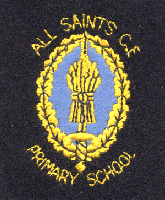|
Part Two..cont Those winters always seemed frill of snow walking up Church Lane leaning into the blizzard frill of dreams of bravery, people like Nelson, Scott and Grenfell; the summers seemed long and hot with endless, wonderful holidays, helping with the harvest on the local farm. When the fields were too wet for games we would play cricket with a cardboard box as a wicket in the middle of Ridge Road; this was not because we didn’t care about road safety, but I only remember two cars interrupting those test matches. One car belonged to the local farmer, Mr. Watson and its arrival necessitated the suspension of play and the removal [temporarily] of the treasured cardboard box. The second car belonged to a Mr. Escourt, who had built the houses and turned into his front drive before reaching the roadway wicket. Life at All Saints’ during those years seldom deviated from a set pattern except for the demands of war. Even within Marple there was obvious evidence of poverty and the quality of children’s clothes was rather poor by today’s standards. All the boys wore short trousers; promotion to “longs” came much later at the secondary school; long kneesocks, which always seemed to be grey, frequently had large holes in the heels, and, from time to time, some children came without socks and with worn patches or tears in the seats of trousers. Like most children we were not always kind to those less fortunate than ourselves and one family was often the target of teasing. One son in particular remains in my memory as being the butt of much unkindness and it often comes back to me today when I see him in Marple, now of course, a man in his fifties, looking as smart as anyone else and a friendly, cheerful and polite member of our community. My memories of the school itself are a strange mixture. The building itself always seemed rather odd. It consisted of a large central hail divided into two classrooms by quite small and inadequate screens, and in one corner, behind further screens the headmaster’s study! Along the Brickbridge Road side of this hail were two further classrooms separated by more substantial screens which I do not recall ever being moved. Leading from the main hall were three further classrooms, two for the youngest children and one for those who needed special help. The teachers were kind but firm and Mr. Revill, nickname “Revill the Devil”, ruled over the school, not with a rod of iron, but with a tawse of leather. As he was somewhat plump, the small boy awaiting punishment would see the tawse disappear from view beyond the ample waistline into the sky then reappear at increasing speed until it made contact with the miscreant’s outstretched hand. However, such ceremonials were infrequent and there were many more happy memories. I remember a Miss Walker who, just before the Easter holidays, told us to put our heads on folded arms on top of our desks and “Close your eyes!” Nobody dared to peep - if Miss Walker told you to do something, you did it. On the instruction to open our eyes we did so, and found before each pupil an Easter Egg - it is difficult to imagine the joy experienced and the pride with which that egg was carried home. “My teacher gave me this!” There were very few changes on the staff during my years and I can still remember the names. The first teacher one met was Miss Johnstone [or was it Johnson?] Then came- the redoubtable Miss Dobson - little did I realise that I would act in a play with her some twenty years after sitting in her classroom, for she was a life-long member of what is now the Carver Theatre, having joined it in 1906 and taken part in its first production, Shakespeare’s “A Midsummer Night’s Dream”. My third teacher was Miss Walker, famous for the Easter Eggs, then I remember a Miss Gregson [later to become Mrs. Titterington I recall]. |
|||||||||||||
